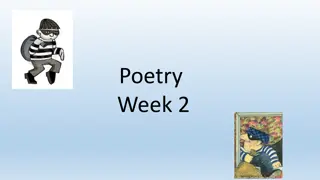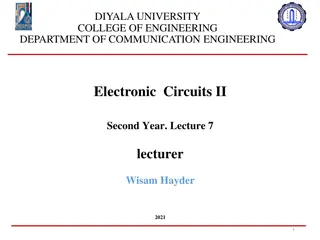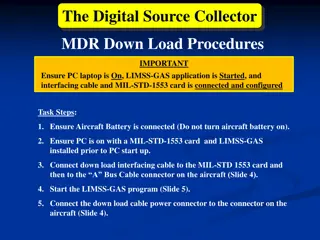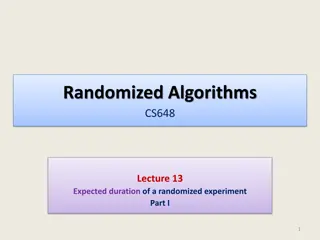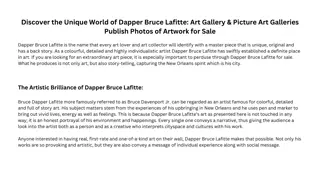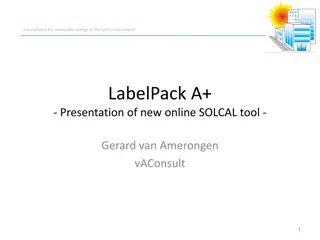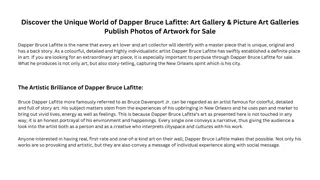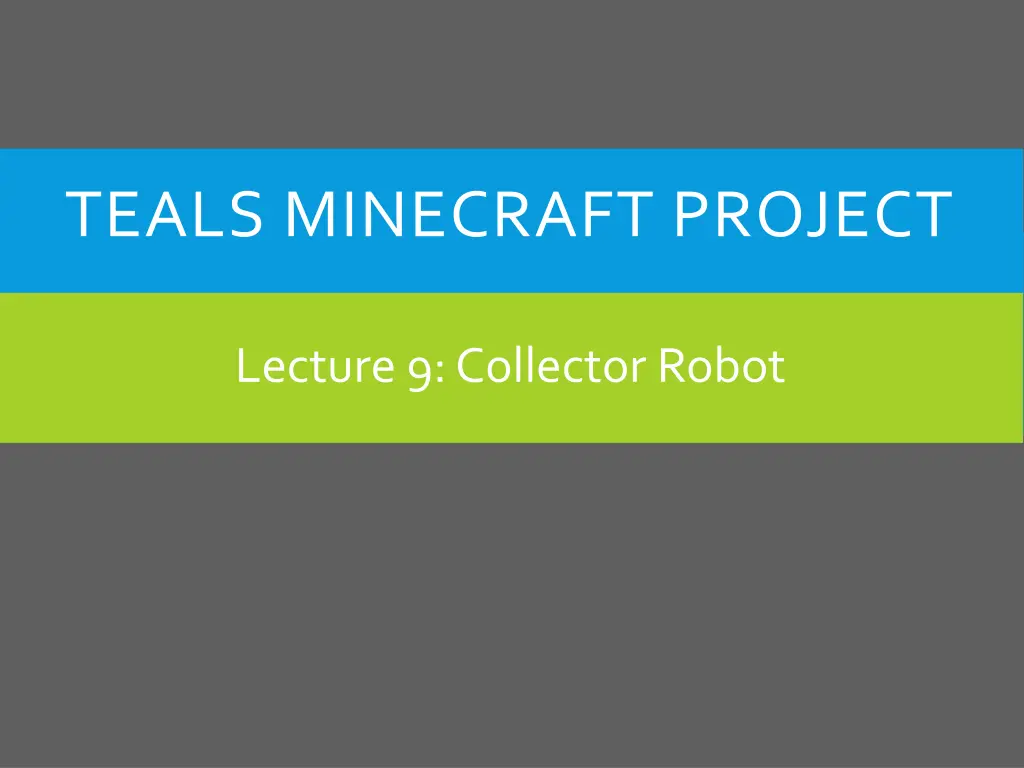
Creating a CollectorBot in Minecraft
Dive into the world of Minecraft as you learn to design and program a CollectorBot. This robot entity seeks out loose items, picks them up, and manages its inventory. Explore concepts like navigation, item collection, and HashMaps to enhance your Minecraft project.
Download Presentation

Please find below an Image/Link to download the presentation.
The content on the website is provided AS IS for your information and personal use only. It may not be sold, licensed, or shared on other websites without obtaining consent from the author. If you encounter any issues during the download, it is possible that the publisher has removed the file from their server.
You are allowed to download the files provided on this website for personal or commercial use, subject to the condition that they are used lawfully. All files are the property of their respective owners.
The content on the website is provided AS IS for your information and personal use only. It may not be sold, licensed, or shared on other websites without obtaining consent from the author.
E N D
Presentation Transcript
TEALS MINECRAFT PROJECT Lecture 9: Collector Robot
OVERVIEW For this lab, we'll create a CollectorBot. This robot entity will 1. Seeks out loose items until the robot comes within range of nearby items. Navigate to the nearest item until close enough to grab it. 2. Picks up the item and adds it to the robot's inventory. 3. On damage, drops all items in its inventory and wanders around stunned for twenty seconds.
1. SEEKS OUT LOOSE ITEMS This involves enumerating all items in the world, and selecting the closest one within the robot's search distance. To get a List<Entity> of all entities in the world List<Entity> entityList = (List<Entity>) entity.worldObj.getLoadedEnityList(); Finding Items Within Range float distance = entity1.getDistanceToEntity(entity2); Navigating to Nearby Items // Start navigation (speed can be Robot.SPEED_FAST, Robot.SPEED_NORMAL, // or Robot.SPEED_SLOW). entity.getNavigator().tryMoveToEntityLiving(Entity other, float speed); // Stop navigation. entity.getNavigator().clearPathEntity();
2. PICK UP LOOSE ITEMS We will need to keep track of everything that the robot has picked up. We'll also need to "pick up" an item from the world, which means that it's removed from the world. Removing an item from the world void item.worldObj.removeEntity (EntityItem item); Items are contained in a stack, which holds a multiple of some item ItemStack itemStack = entityItem.getEntityItem(); int count = itemStack.stackSize; Item item = itemStack.getItem(); Printing items names for debugging String printableItemName = item.getUnlocalizedName(); Managing the inventory of collected items how?
HASHMAPS You know how arrays work. An array contains a set of values, which you reference with an integer: int[] someArray; someArray[0] = 37; someArray[1] = 13; someArray[2] = 11; int foo = someArray[1]; // foo 13 What if you could index an array with any value? HashMap<String,Integer> hash = new HashMap<String,Integer>(); hash.put ("Ariel", 37); // hash["Ariel"] 37 hash.put ("Bubbles", 13); // hash["Bubbles"] 13 hash.put ("Calisto", 11); // hash["Calisto"] 11 int foo = hash.get ("Bubbles"); // foo hash["Bubbles"] hash.remove ("Ariel"); // Delete hash["Ariel"] That's a hash map.
HASHMAPS HashMap<String,Integer> hash = new HashMap<String,Integer>(); hash.put ("Ariel", 37); // hash["Ariel"] 37 hash.put ("Bubbles", 13); // hash["Bubbles"] 13 hash.put ("Calisto", 11); // hash["Calisto"] 11 int foo = hash.get ("Bubbles"); // foo hash["Bubbles"] hash.remove ("Ariel"); // Delete hash["Ariel"] Enumerating HashMaps Set<KeyType> keyset = hash.keySet(); // Get set of all hash keys // Print the contents of a hash map for (KeyType key : hash.keySet()) { valueType value = hash.get(key); } // or for (Item item : inventory.keySet()) { Integer count = inventory.get(item); }
3. ON DAMAGE, STUNNED ROBOT DROPS ITEMS When the robot experiences damage of any kind, it drops all of its items and wanders around stunned for twenty seconds. Handle Robot Damage Events // This Robot method will be called whenever our collector bot receives // any kind of damage. public void Robot.onEntityDamage (DamageSource source, float amount); Drop All Items In the Robot's Inventory // Do this for each item in the robot's inventory void dropItem (Item item, int count);
3. ON DAMAGE, STUNNED ROBOT DROPS ITEMS The final piece of wandering around stunned for 20 seconds is that we need to suppress the robot's item-collection task. Remember these EntityAIBase methods? // Indicate whether the task (collection task in this case) should execute public boolean shouldExecute(); // Indicate whether the task (collection task) should continue executing public boolean continueExecuting(); When we're stunned (when the robot is damaged in any way), then continueExecuting() will return false. Using the System time, we'll always return false from shouldExecute() as long as we're in "stun time".
LAB 9: COLLECTOR ROBOT At this point you should have everything you need to implement the collector robot. Remember to references the notes section, as this will have all of the details you need to complete this lab.






